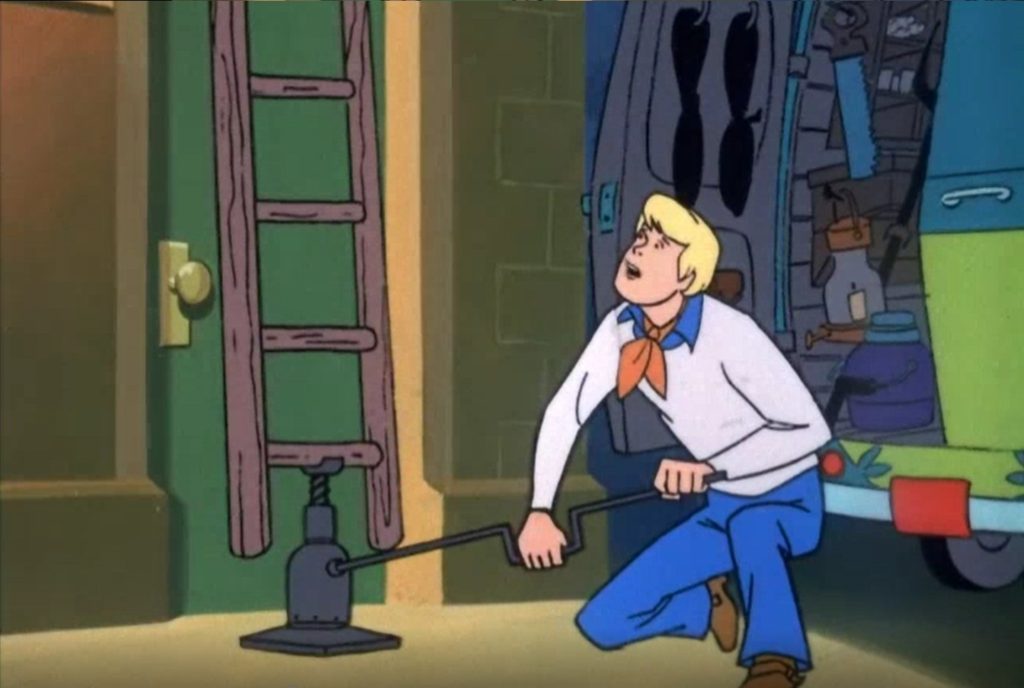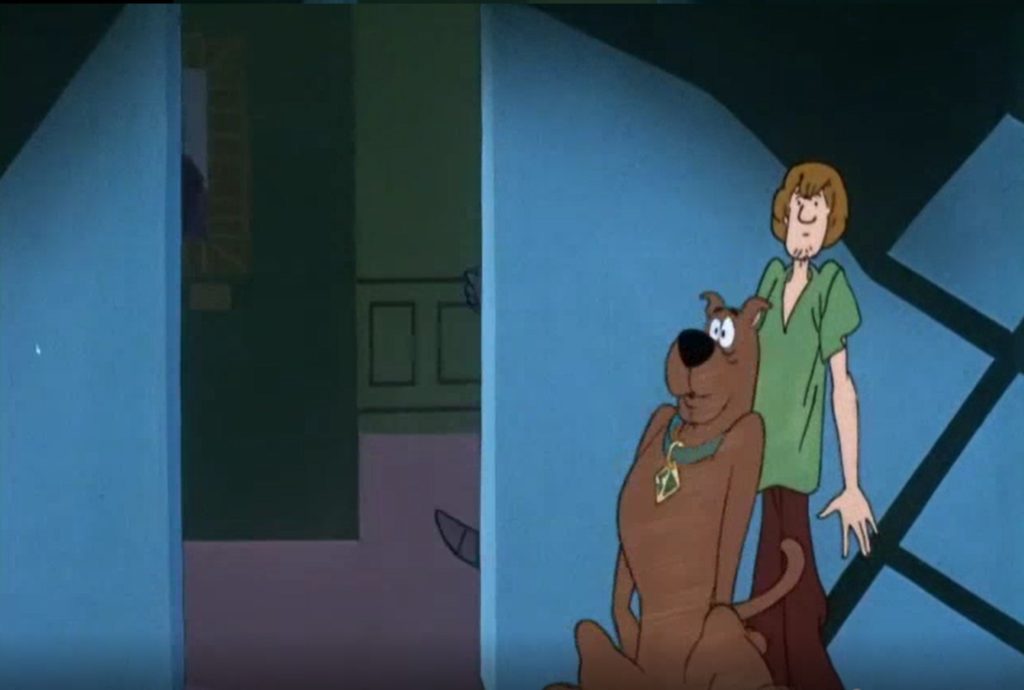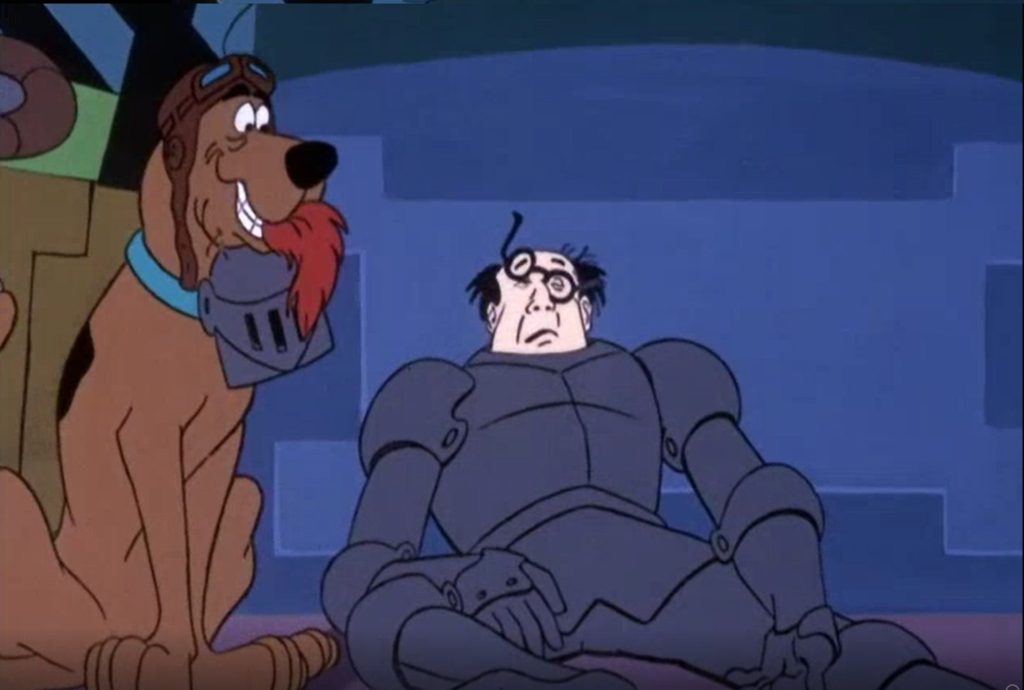Dungeons and Dragons floats above a vast pop-culture sea, from the original Dungeon Master’s Guide‘s Appendix N to official 5e subclasses themed after Avatar: The Last Airbender and Dragonball Z. But in that great slush there is one unlikely source with plenty of tips: Scooby-Doobie-Doo.
The Scooby-Doo gang not only has as many characters as players in an average D&D game, but those characters also showcase how a party of dissimilar characters can come together and shine, how PC plans usually go, what to do when they fall apart, and, of course, that everything comes down to a guy wearing a rubber mask. Here are some tips for DMs — straight from Scooby Doo!
Everyone Participates

Everybody knows how the Mystery Incorporated breaks down: Fred’s the leader, Velma’s the smart one, Daphne gets kidnapped, Shaggy’s the bait, and Scooby’s the mascot. Unfortunately, the show doesn’t always work like that. Take the very first episode, What a Knight for a Knight. Fred technically spotted the first clue, but Daphne found the first hidden enough for a skill check. Right after, she was the first one to put the clues together. Shaggy noticed a missing painting, Velma helped out in the library, and even Scooby found something–using his heightened dog senses!
D&D is built around combat, and that’s the area where every character class was made to be useful. But everyone should be involved in everything outside of combat too. Be like the Scooby Gang–everyone solves that mystery, and everyone’s there when it’s time to talk.
The Dumb Idea Usually Works

Let’s be real, Fred’s plans are terrible, and they were years before A Pup Named Scooby-Doo turned him into an idiot and Scooby-Doo! Mystery Incorporated gave him a fixation for mechanical traps that would make Tucker’s kobolds proud. His leadership start’s with “Well gang, it looks like we’ve got another mystery on our hands!” and ends with “Let’s split up gang!,” with a couple dubious moments haphazardly thrown in between. But the thing is, Fred’s plans do work. Not directly, but the bad guy always gets caught at the end.
While I’m not saying you should do anything crazy like split the party, the fact is there is some wisdom in Fred’s approach. D&D is a game about having fun, and at the end of the day your stupid plan is, whatever hiccups aside, going to get you the bad guy. You’ll have a lot of fun going with your gut, and the fact of the matter is that your DM already thinks all of your plans are terrible anyway, so you might as well take a tip that’s faceless blonde lug.
Improv is Everything

Shaggy and Scooby-Doo didn’t come to the table with a backstory or a personality, or even much of a character idea. Scooby’s the guy that insisted he be a talking dog in a down-to-earth 70s mystery game and Shaggy cracked a couple of jokes in the first session and built his whole personality around it. Shaggy’s got a list of random abilities on his character sheet, most of which probably came from his class, and no idea how they add up to a whole person.
He makes it work anyway. And when he doesn’t, his friends pitch in to help. Shaggy has an acrobatics proficiency because he picked it from a background he picked at random? Well, just look at the quote above–he didn’t know why why he had the box marked, but Daphne sure made something up for him. At the end of the day, that’s what D&D is: a bunch of friends making stuff, so drop in and help out your struggling buds every once in a while.
Problem Players

Of course, Shaggy and Scooby being those two guys has its downsides because they’re those two guys. In that very first episode of Scooby-Doo the bad guy chases the whole group down the hall, but Shaggy and Scooby duck into another room, presumably to let the rest of the friends be assaulted by the criminal knight.
That’s obviously a pretty mean thing to do, and, hey, their DM knows it. We spend the next few scenes watching the monster focus on getting them, while the rest of the gang has time to hide, plan, and prepare.
But, in this case, maybe that DM could have used some tips too. Talk with them after the game, or during a break, or even check if anyone else has a problem with their behavior first. And if it really bothers the DM, maybe give him a win. D&D’s only fun when everyone’s having a good time, after all.
A Guy in a Mask

Every elf is, when you get down to it, a human person with pointy ears an an attitude. Swap out the features, and you get every illithid, beholder, and eldritch horror in the D&D canon. Just so, every Scooby-Doo villain is a guy in mask in it for the money. They have a plan, a motivation, limitations, and they’ve thought it all through. That illithid still needs to figure out how to transport and preserve all those brains it’s been taking for when times are lean, and thinking through these kinds of things can make your bad guys all the more convincing–and monstrous!
The Mystery-Inc gang might be ridiculous, but they aren’t ephemeral. They’ve got got a lot of offer, if you listen. And if you want more nuggets of D&D wisdom, read through some Contrarian Writing Advice.